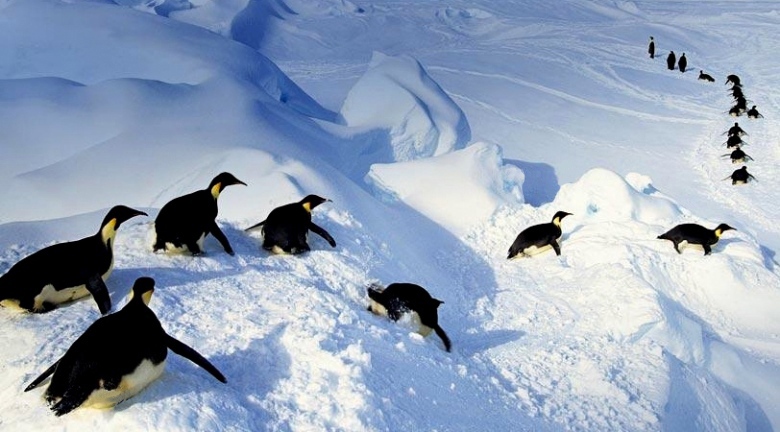
One of the fastest-warming places on the planet, the Antarctic Peninsula, has lost two massive ice shelves in the past 20 years: the Larsen A and the Larsen B. Each disappeared in a matter of weeks. No one knows for sure why the ice shelves collapsed, but a new study finds the remaining Larsen C ice shelf is melting from more than just warm air.
"We know there is strong atmospheric warming in this region," said lead study author Paul Holland, a climate scientist with the British Antarctic Survey. For instance, this summer, the Antarctic Peninsula set new heat records. But until now, no one thought the ocean played a role in the collapsing ice shelves, Holland added. "On the Larsen C ice shelf, we see 4 meters [13 feet] of ice loss that can’t be explained solely by atmospheric warming," Holland told Live Science.
The Larsen C ice shelf is a flat plain of floating ice slightly smaller than West Virginia. It is fed by land-based glaciers flowing off the Antarctic Peninsula, and is the largest ice shelf in the region. The research team monitored thickness changes in the ice shelf between 1998 and 2012, using satellites and ground-based radar. The scientists saw Larsen C lose thickness in two ways during this period.
First, air escaped from the old snow layer on top of the ice. This old snow, called firn, has tiny, permeable air pockets that help it insulate the ice underneath like a down comforter. In summer, meltwater can trickle down through the snow like syrup through a frozen treat. The firn loses thickness when it melts down, and the air is lost. If the firn freezes into ice, meltwater ponds on the surface and absorbs sunlight and heat, driving further melting.
